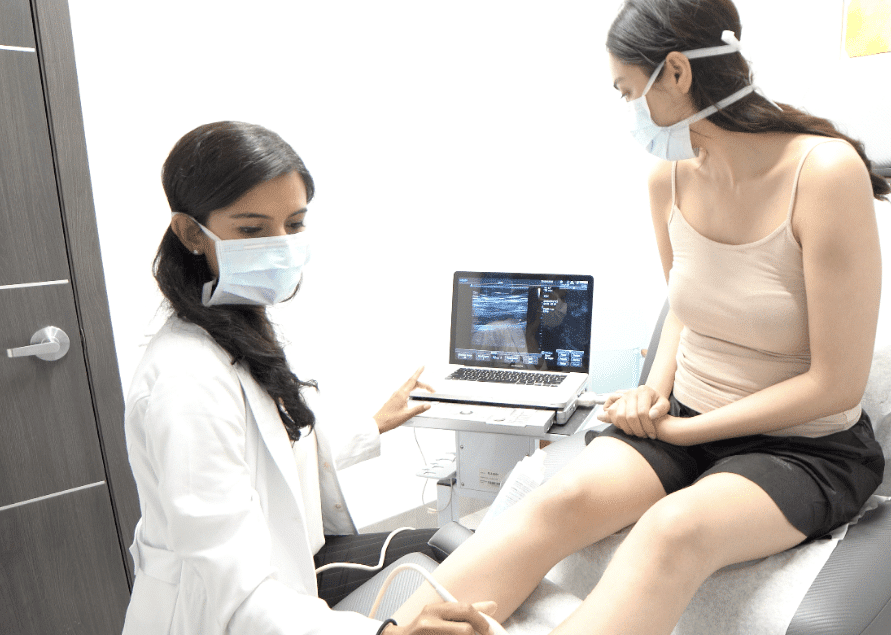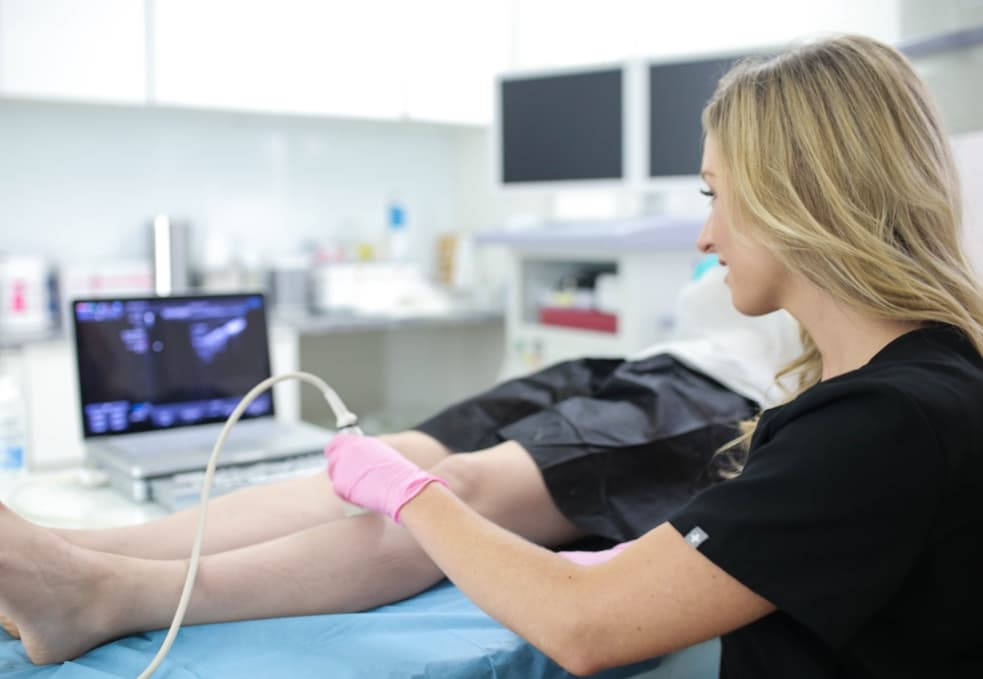What to expect after vein ablation?
Vein ablation, also known as endovenous ablation, is one of the most effective minimally invasive procedures for patients with chronic venous insufficiency. The endovenous ablation procedure involves using thermal or laser energy to destroy the diseased saphenous vein responsible for your vein problems. Once the diseased vein is collapsed or destroyed, the accumulated blood reroutes into healthier leg veins, restoring optimal blood circulation to the heart.
Endovenous ablation is a minimally invasive, in-office, and outpatient procedure that concludes within an hour. The procedure is mostly painless, performed under local anesthesia, and involves a negligible risk of complications. After the procedure concludes, you can resume most of your daily activities and work immediately — no downtime. If you have underlying vein disease, you must have concerns regarding the aftercare of endovenous ablation.
The following is an overview of what you can expect after vein ablation:
- Expect mild post-treatment side effects, such as discomfort, irritation, bruising, and swelling after vein ablation. The side effects usually dissipate within a few days.
- Wear ACE bandages for up to 24 hours after vein ablation to reduce swelling.
- Wear compression stockings continuously for up to 72 hours to reduce swelling after vein ablation. Even after the first 72 hours, you must wear compression stockings intermittently to ensure optimal healing and recovery.
- Walk frequently at regular intervals throughout the day.
- If you have a desk job, take short walking breaks throughout the day.
- Elevate your legs above your heart’s level while sitting or lying down.
- Avoid lifting heavy objects that place pressure on your leg veins.
- Avoid getting your legs wet for a few days.

How long does vein ablation take?
The endovenous ablation procedure takes 30 to 60 minutes. You should arrive for the appointment approximately 15 minutes before the scheduled time, which will give you enough time to prepare. During the procedure, the vein doctor administers local anesthesia to create a small incision on the skin’s surface. After making the incision, the vein doctor inserts a catheter into the diseased vein under ultrasound guidance. Once the catheter is inside the diseased vein, the vein doctor activates it to generate thermal energy or laser energy, which collapses the problematic vein. The accumulated blood reroutes into healthier leg veins, restoring optimal blood circulation to the heart.
The entire endovenous ablation procedure should conclude within 30 minutes. However, if you’re undergoing the treatment on the same day as your initial consultation, the vein doctor will also have to discuss your symptoms, examine your leg veins, and administer a duplex ultrasound test to diagnose the root cause of your vein problems. If you undergo the initial consultation, diagnosis, and treatment in the same session, the total duration might be around 60 minutes. But if you only opt for the endovenous ablation therapy, the session might conclude within 30 minutes. You can also spend more time at the vein center if you have questions for the vein doctor.
Vein stripping vs. ablation: which is better?
Vein stripping is a complicated surgical procedure. In the past, vein doctors could only treat chronic venous insufficiency using complex surgical procedures that involved multiple excisions, hospitalization, general anesthesia, extended downtime, and a high risk of complications, such as infections and deep vein thrombosis. Vein stripping is one of the traditional approaches to vein treatment — it involves the physical extraction and removal of the diseased saphenous vein through incisions on the skin’s surface. You should ideally avoid vein doctors who recommend vein stripping and other surgical procedures instead of minimally invasive procedures.
Vein ablation is a minimally invasive procedure. In fact, endovenous laser ablation is one of the first minimally invasive procedures to have been developed and approved in 2003. It’s an in-office and outpatient procedure that involves no downtime, harsh side effects, or complications. It concludes within 30 minutes, following which you can resume your daily activities immediately. Furthermore, vein ablation also produces better results, has a higher success rate, and a lower risk of vein disease recurrence. Vein ablation is safer, more effective, and more convenient than vein stripping.
Is VenaSeal a suitable alternative to ablation?
VenaSeal is one of the best minimally invasive alternatives to vein ablation. VenaSeal is a minimally invasive procedure that involves injecting a medical-grade adhesive into the diseased saphenous vein under ultrasound guidance. The vein glue seals the diseased vein’s walls together, turning it into hardened scar tissues eventually metabolized by the body. Meanwhile, the accumulated blood reroutes into healthier leg veins.
The advantage of VenaSeal is that it doesn’t burn the diseased vein, so it also minimizes the risk of nerve injuries. VenaSeal doesn’t involve tumescent anesthesia either, so it causes less post-treatment swelling and discomfort. But VenaSeal is a relatively new procedure that has only recently won FDA approval for vein treatment, so it’s not yet covered by all major insurance plans. Your vein doctor will find the ideal varicose vein treatment for you.
Explore your varicose vein removal options today
Long Island Vein Center is the leading state-of-the-art vein center specializing in minimally invasive spider vein and varicose vein treatments in Long Island. Our vein doctors carefully examine your leg veins, diagnose the root cause of your vein problems, and curate the ideal vein treatment plan. We only provide the latest and safest minimally invasive vein treatments that allow you to resume your daily activities immediately. Please schedule an appointment to explore your varicose vein removal options today.

